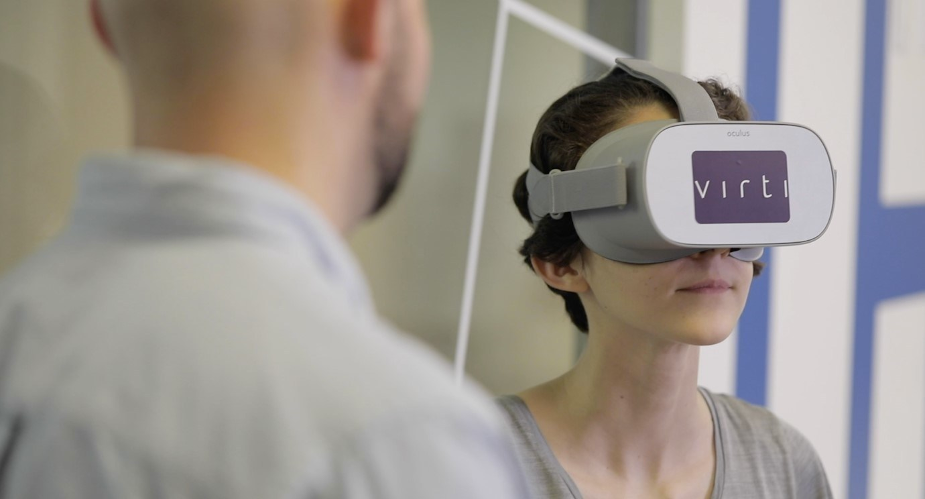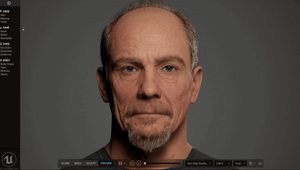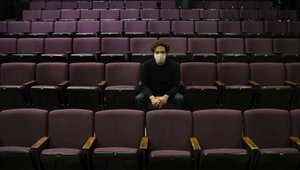
Immersive Technology and Healthcare

The unique properties of virtual reality, mixed reality, and augmented reality are opening up new opportunities within healthcare and science with the potential to improve the lives of millions. Here are just some examples of how immersive technology is having a positive impact.
Training
One of the biggest use cases for virtual reality is training and the medical world has already employed the technology in a number of different training scenarios to benefit patients and hospital staff.
Training During a Pandemic
Faced with the challenge of training 1000s of people who had volunteered to help with the influx of patients due to Covid-19, the NHS turned to virtual reality to help. Virti’s immersive training solution was used to deliver remote educational programmes to NHS employees to show them how to safely apply and remove PPE, how to engage with patients, and also orient them in unfamiliar hospital environments.
The NHS also commissioned Virti to conduct a study to quantify VR’s value in educating hospitals’ frontline workers. According to Virti, the study confirmed significant improvements when using VR rather than traditional training: 92% of the VR participants were deemed to adequately understand infection control measures, compared with only 16% of the control group, while post-training performance increased by over 230% for the VR group, versus 16.75% for the control group. Users of the VR system also self-reported lower anxiety levels when dealing with Covid-19 scenarios.

High-Risk Situations
Doctors and nurses in the emergency room work in a high pressure, high-stress environment, which sometimes involves making critical decisions. These emergency, low frequency, high stakes procedures are ‘life or death’ cases and require a highly-skilled, highly experienced doctor. However, because of their relative rarity, the expertise needed is difficult to acquire.
Medical professionals have traditionally trained on mannequins and cadavers, however, this method of training cannot fully replicate the other pressures that come into play in a real emergency. Two doctors from Children’s Hospital Los Angeles (CHLA) teamed up with AiSolve and Bioflight VR to address this issue, by creating a virtual trauma room that more accurately represents how real-life emergencies may play out.
Within the experience, doctors are debriefed by the Emergency Medical Technicians (EMTs) on the patient’s condition, then they have to check vital signs, assess medication, and carry out the best course of action. This is all done under a time constraint - as with a real emergency - so it requires doctors to focus and keep calm under pressure. This training tool enables trainee doctors to prepare for the real thing, without the fear of failure and its consequences.
Treatment Training
When pharmaceutical industry leader Novartis had to quickly train 100s of people on best practice production and aseptic procedures for a new leukemia treatment, the company turned to the Gronstedt Group to develop a new state-of-the-art virtual reality simulation. The simulation was particularly valuable as Novartis had limited physical training labs and SMEs to train people.
Students rehearsed techniques over and over in preparation for real-life performance. Repeated actions in virtual reality alter neural wiring and build muscle memory, in turn improving real-world performance. Importantly, the simulation promoted learning in the context where the skills would be applied.
Treatment For Stress & Anxiety
Studies have shown that VR can ease certain phobias, treat PTSD, help people with psychotic disorders experience less paranoia and anxiety in public settings, and reduce social anxiety. Considering that mental disorders are among the leading causes of ill-health and disability worldwide, VR is a welcome additional treatment.
Despite the vast number of patients afflicted by some form of anxiety disorder, only 36.9% receive treatment. This is where companies like Mimerse could make a real difference. Since 2014, this ‘virtual pharmacy’ has been developing therapeutic VR apps. Mimerse has been working with clinicians, scientists, healthcare and platform providers to create a scalable future of mental healthcare. The company’s products include a relaxation and meditation experience for inducing calm and reducing stress, and an app to tackle the phobia of public speaking. Further apps to combat the fear of flying, arachnophobia and pain are coming soon. Mass-market tools like this could offer huge value for individuals globally.
To date, due to cost and technology limitations, VR has not been widely available as a treatment. However, with the rise of affordable standalone and mobile VR headsets, there is increased opportunity to use VR and decentralise mental health treatment, allowing more people to benefit.
Rehabilitation In Spinal Cord Injury (SCI)
"I hit the windscreen, bumped off down the road, and ended up with a spinal cord injury—a C7 complete quadriplegic," Angus McConnell said. Told he would never have any movement from below the chest and having spent four years in a wheelchair, Angus began to have extended physio sessions in VR combined with electrical muscle stimulation as a way of re-training his body
Angus told the Feros Care Growing Bold podcast: “I can look down in VR and see my legs moving. That’s going to trick my brain, we think, into helping my brain and central nervous system reboot somewhat and start working, and certainly grow the neural pathways.”
Whilst, medical researchers are currently learning more and more about how VR may restore feeling in patients who lost sensation in areas of their body an analysis of evidence showed a mostly positive outcome for the use of VR in SCI rehabilitation. With the decrease in costs and improved accessibility of the technology, VR will only continue to be a method of treatment in this area.
Enhancing Surgical Procedures
Surgeons in the UK are using Microsoft’s mixed-reality headset to ‘see inside’ patients before they operate on them. Rather than place users in a fully computer-generated world, as virtual reality does, HoloLens allows users to place 3D digital models in the room alongside them. The device does not have wires or external cameras, or require a phone or PC connection, users can walk around the objects they create and interact with them using gestures, gaze and voice.
A team at Imperial College London are wearing HoloLens devices in operating theatres so they can spot key blood vessels, bones and muscles, making procedures quicker and safer. HoloLens allows the surgeons to take CT scans that have previously been completed and overlay 3D digital models of them onto a patient’s limb during reconstructive surgery.
Dr Philip Pratt, a Research Fellow in the Department of Surgery and Cancer at Imperial College London, said HoloLens is allowing surgeons to understand a patient’s unique anatomy very quickly and accurately. “To perform the best operation, you have to plan it meticulously beforehand. This technology allows us to experience the data that we have collected from patients before their operation in the most realistic and natural way. You look at the leg and essentially see inside of it; you see the bones and the course of the blood vessels,” he said.
Whilst the use of HoloLens in operating theatres is at an early stage, researchers are confident mixed reality could be applied to other areas of surgery and could be a game-changer as the technology can make surgeries more effective, safer and faster.











